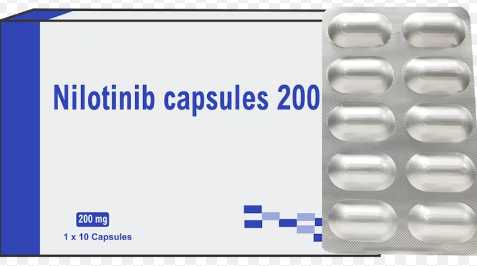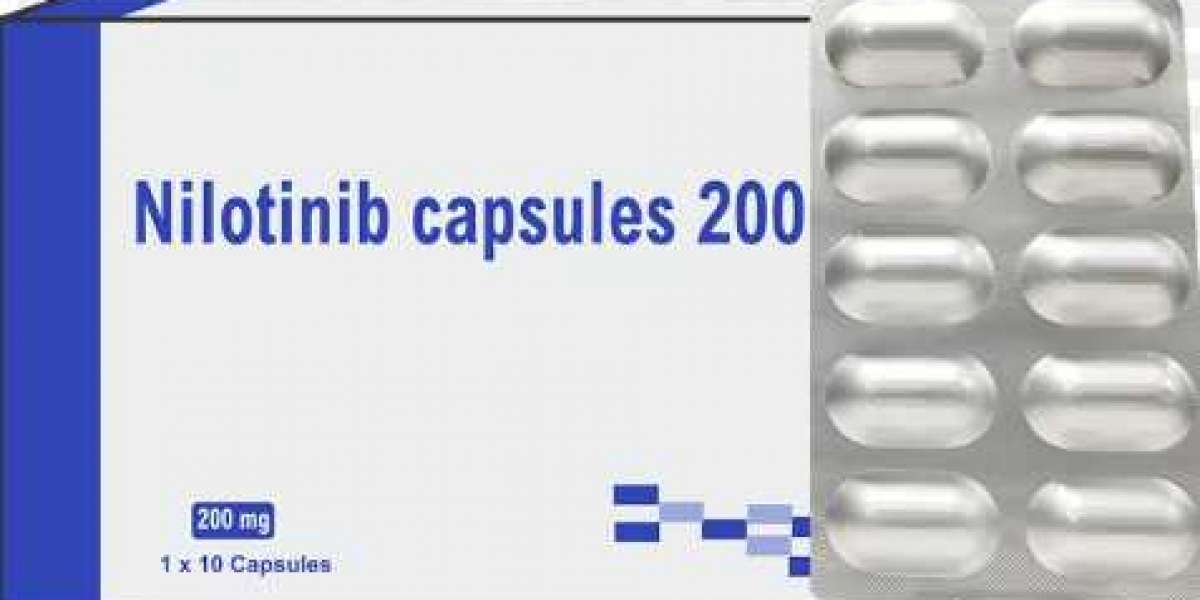Imatinib has been a game-changer in the treatment paradigm for chronic myeloid leukemia (CML) ever since it was first approved in the year 2001. The BCR-ABL fusion oncogene, which is the underlying genetic driver of chronic myelogenous leukemia (CML), was specifically targeted by imatinib, which ushered in a new era of precision oncology. Nevertheless, difficulties surfaced as a result of the progression of the disease in certain patients, which was attributed to resistance brought about by mutations within the BCR-ABL gene itself.
The development of tyrosine kinase inhibitors (TKIs) of the second generation that have enhanced activity against mutant variants of BCR-ABL was prompted as a result of this to stimulate increased research efforts.
In 2007, the Food and Drug Administration (FDA) granted approval to nilotinib API, which has been shown to be highly effective against chronic myelogenous leukemia (CML), including in patients who have experienced failure with or intolerance to imatinib. Nilotinib's success in clinical trials can be attributed to the novel properties it possesses as a kinase inhibitor. However, the work of organic chemists and pharmaceutical scientists, who develop scaled manufacturing processes for the active pharmaceutical ingredient (API) of each and every drug that is approved, is the most important factor in the approval of each and every drug. It is the purpose of this article to investigate the distinctive molecular structure and properties of nilotinib, as well as the approved formulations and large-scale API production techniques that support its global supply. Molecular Underpinnings of the Nilotinib StructureNilotinib is a type of TKI that belongs to the second generation of aminopyrimidines and is customised through structure-based drug design approaches. Nilotinib has a more powerful ability to bind within the ATP-binding pocket of the BCR-ABL kinase domain, which stabilizes it in an inactive conformation.
This ability is in comparison to imatinib, which has a weaker ability to do so.
This results in an increase in the activity of nilotinibs against a large number of BCR-ABL mutations that confer imatinib resistance. When compared to imatinib, the molecular differences that result in nilotinib's optimized binding kinetics are relatively minor. Nilotinib's inhibitory binding energy is increased by a crucial trifluoromethyl substituent, which is achieved through the utilization of favorable hydrophobic interactions. In addition, the presence of a chiral methyl group on the pyrimidine helps to stabilize the specific orientation of nilotinib hydrochloride within the kinase site. It is because of these modifications that nilotinibs have a fiftyfold increase in their effectiveness against wild-type BCR-ABL. Nilotinibs are classified as a second-generation TKI, which results in an improvement in target specificity and inhibitory activity profile compared to imatinibs. They are responsible for this classification.
Chemical and Physical Characteristics of Nilotinib Active Pharmaceutical Ingredient
On a molecular level, nilotinib API active pharmaceutical ingredient is made up of the compound 4-methyl-N-3-(4-methyl-1H-imidazol-1-yl)-5-(trifluoromethyl)phenyl-3-(4-pyridin-3-ylpyrimidin-2-yl)aminobenzamide monohydrochloride monohydrate. This substance has a molecular weight of 574.98 grams per molecular unit and its chemical formula is C28H23F3N6O•HCl•H2O. API nilotinib hydrochloride monohydrate has a number of important physical and chemical properties, including the following:Crystalline powder that ranges in appearance from white to a light yellowThe substance is soluble in water to a limited extent, and it is also soluble in methanol and ethanol. The melting point is at least 250 degrees Celsius, and the partition coefficient is log P = 5. 5. The product is stable at room temperature for a period of two years when it is packaged appropriately.
Formulations that have been approved
Nilotinib active pharmaceutical ingredientDespite the fact that nilotinib active pharmaceutical ingredient (API) is not a substance that is directly administered to patients, it does constitute the primary active component of pharmaceutical drug products that contain nilotinib. Hard gelatin capsules, sold under the brand name Tasigna®, are the only dosage form that has been approved by regulatory agencies around the world up until this point. There are three oral strengths of Tasigna® capsules: 150 mg, 200 mg, and 300 mg. These capsules contain the hydrochloride salt of nilotinib hydrochloride in addition to a variety of inactive ingredients that are suitable for pharmaceutical processing and capsule filling. The recommended daily dosing regimens change depending on the patient's tolerance level and the current state of the CML disease.
Manufacturing of Nilotinib Active Pharmaceutical Ingredient on a Large Scale
A state-of-the-art continuous manufacturing capability that complies with cGMP standards is required for the production of nilotinib active pharmaceutical ingredient (API). The leading active pharmaceutical ingredient (API) manufacturer Qingmu Pharmaceutical has successfully optimized a proprietary process, resulting in commercial-scale yields of 99% pure nilotinib hydrochloride monohydrate production.
The following are important components of the Qingmus regulated manufacturing sequence
Multiple reaction–purification steps are required for asymmetric synthesis, which is accomplished through the selective hydrogenation of an imine precursor. Controls for temperature, timing, and the addition of reagents that are extremely precise within closed reaction vesselsNilotinib was extracted from residual byproducts using column chromatography for purification. In order to achieve maximum bioavailability, micronization is used to increase both surface area and solubility. While recycling solvents, crystallization can take place under vacuum or fluidized bed drying conditions. Quantitative analysis that surpasses the requirements of the compendial specificationsIsolated cleanrooms that are equipped with automated packaging and labeling systemsNilotinib active pharmaceutical ingredient (API) that satisfies global quality standards and regulatory expectations is reliably supplied by Qingmu thanks to the implementation of advanced engineering across the integrated production line. Their expertise in manufacturing helps to ensure that nilotinib will continue to have a positive impact against CML on a global scale.
Last Words and Reflections
The development of nilotinib as a powerful second-generation targeted kinase inhibitor that is revolutionizing the treatment of chronic myelogenous leukemia necessitated careful chemistry optimization. Nilotinib's API backbone still required manufacturing that was scaled up to meet the requirements of global commercial and clinical applications, despite the fact that clinical use demonstrated its superiority over first-line imatinib. API manufacturers such as Qingmu Pharmaceutical play an essential yet underappreciated role in the development of precision oncology. They do this by developing robust processes for API synthesis that adhere to the most stringent quality controls. The fact that they were able to manufacture nilotinib hydrochloride on an industrial scale is a demonstration of the ecosystem of drug development that is responsible for the development of novel cancer treatments. Long into the future, vendors such as Qingmu will continue to empower the fight against cancers all over the world by ensuring that there is a continuous supply of high-purity nilotinib active pharmaceutical ingredient (API).







